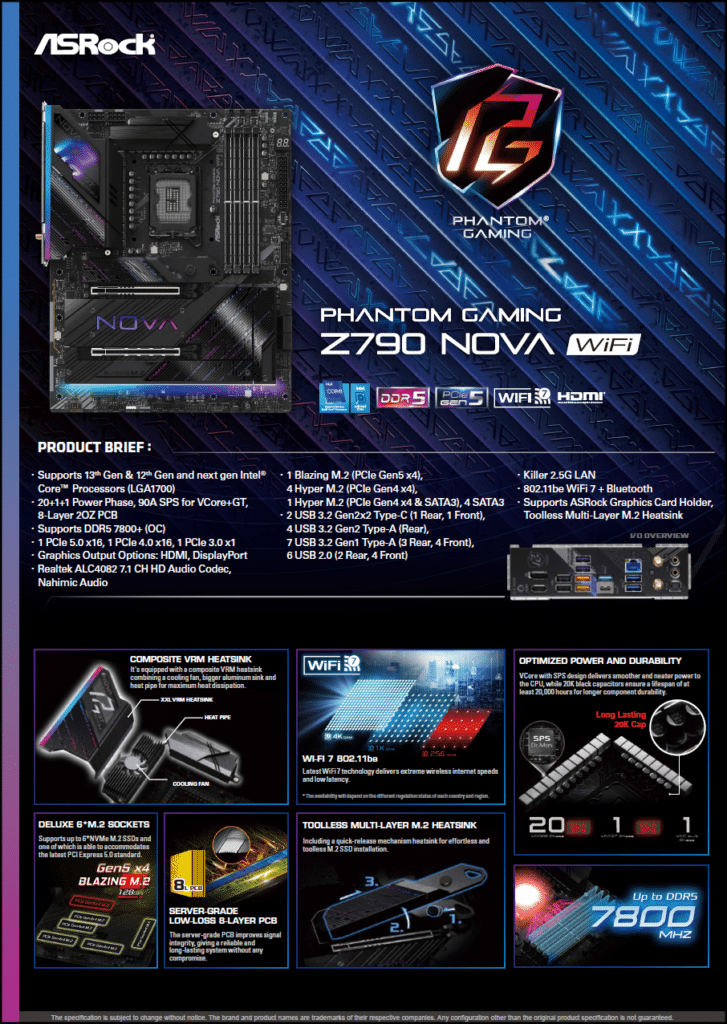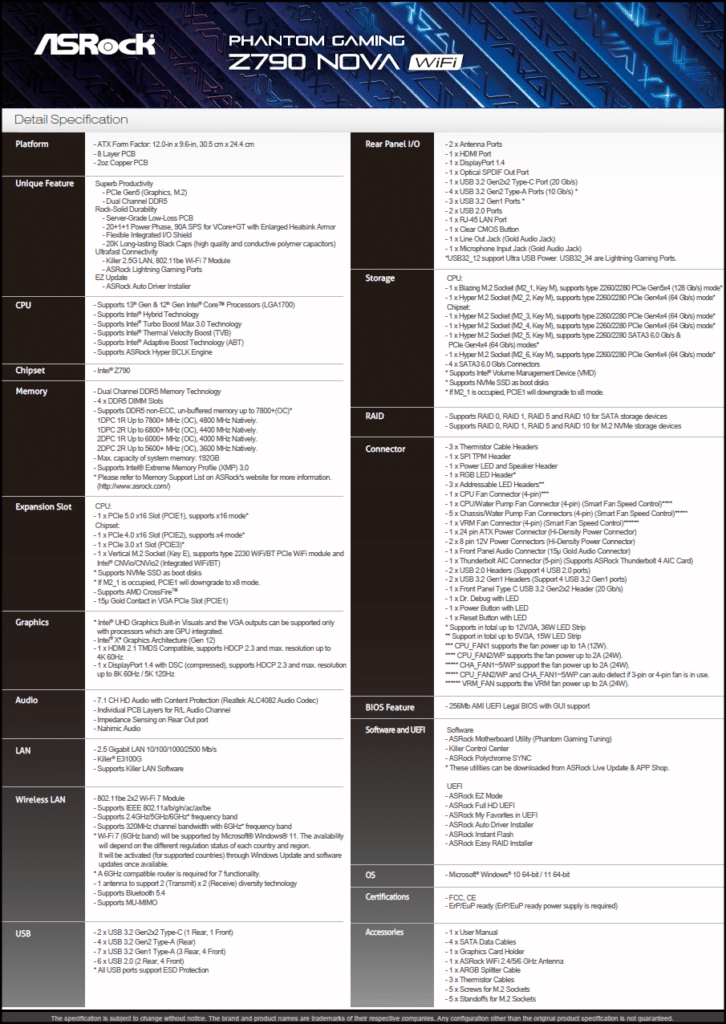ASRock Phantom Gaming Z790 NOVA WIFI Motherboard
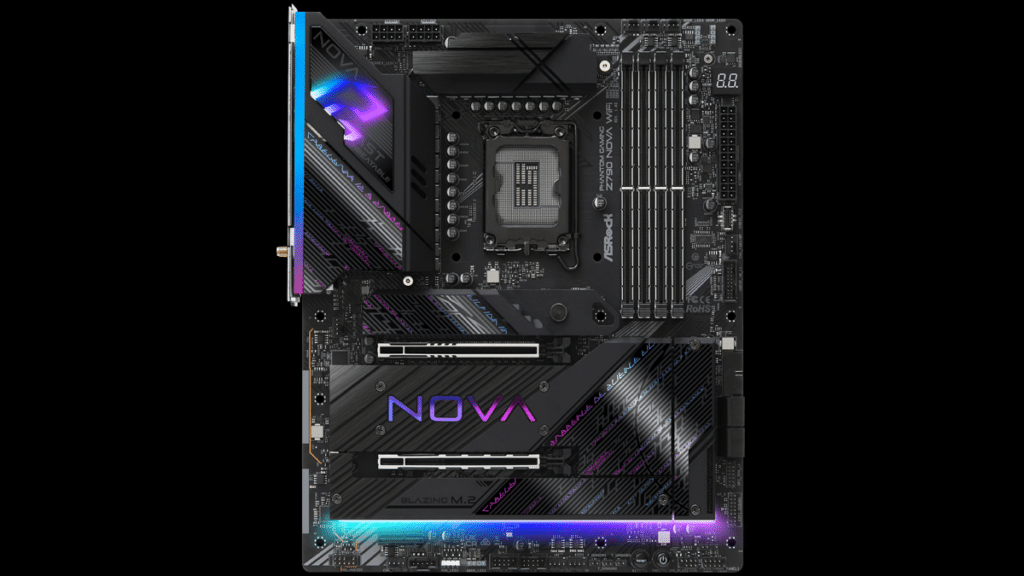
To get the most out of the Intel Core i9-14900K we needed to pair it with a robust, high-end enthusiast-class Intel Z790 motherboard with good VRMs and cooling. We reached out to ASRock and they provided to us with their newest Z790 “refreshed” motherboards, the ASRock Phantom Gaming Z790 NOVA WIFI to test with. This motherboard is so new, that it is only now launching with a refined feature set and layout designed to get the most out of the Intel Core i9-14900K or any 14th Gen Processor CPU. We will be giving this motherboard a full review in the future, for now, we’ll detail some of the features and show you some pictures, and use this motherboard for our 14900K CPU review.
The ASRock Phantom Gaming Z790 NOVA WIFI uses a 20+1+1 VRM design with SPS for Vcore+GT and long-lasting 20K Caps. The PCB is an 8-layer server-grade low-loss 2oz copper PCB to maintain better signal integrity, which can help fast Gen5 devices and improve memory overclocking. It has 2×8-pin 12V power connectors. The motherboard is LGA1700 and supports 14th, 13th, and 12th Gen Intel Core Processors. ASRock has configured this motherboard with a Blazing M.2 socket which supports M.2 2280 PCIe Gen5 x4 SSDs. In fact, it can support up to 6 NVMe M.2 SSDs on board! It supports DDR5 XMP and EXPO memory profiles.
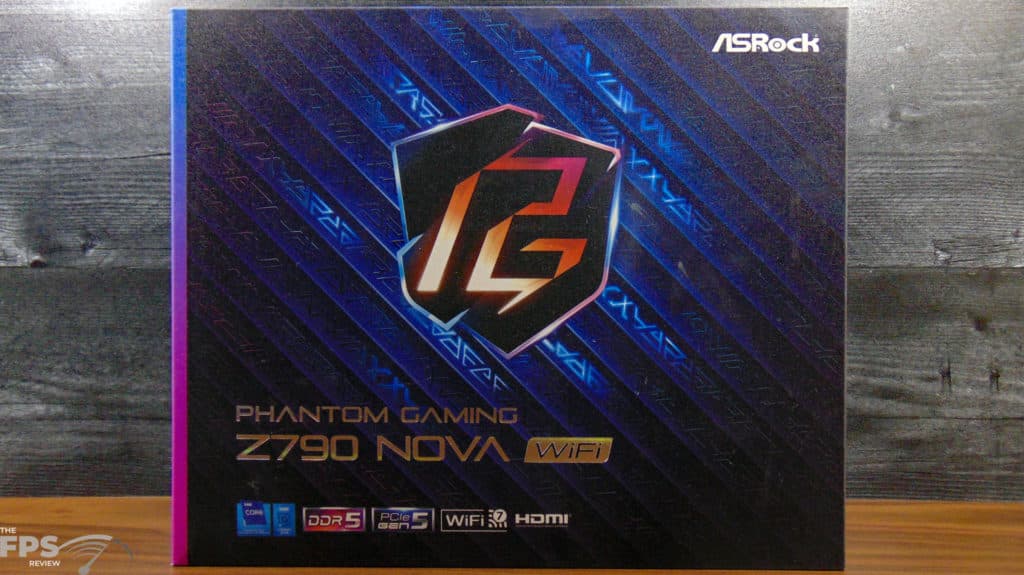
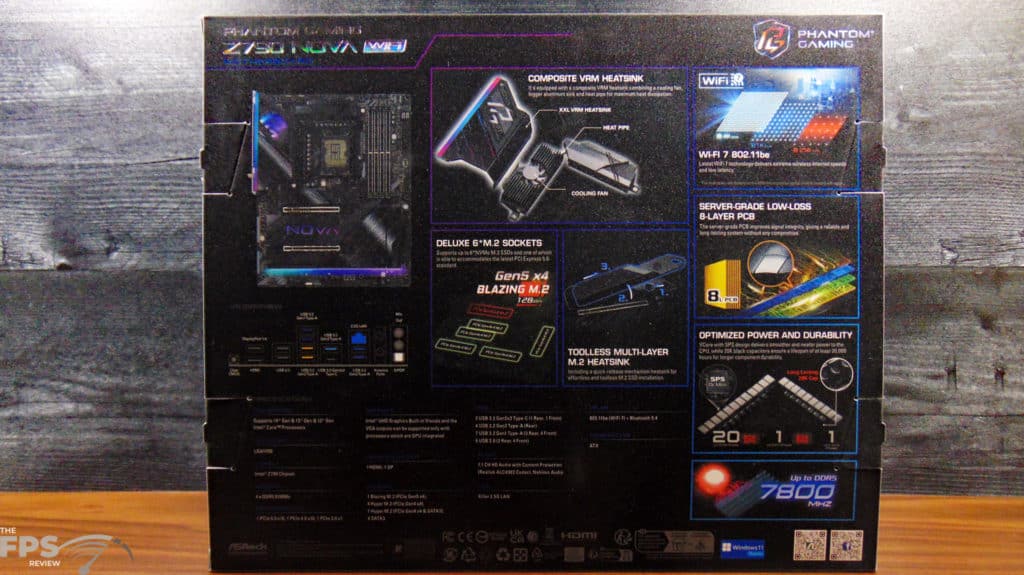
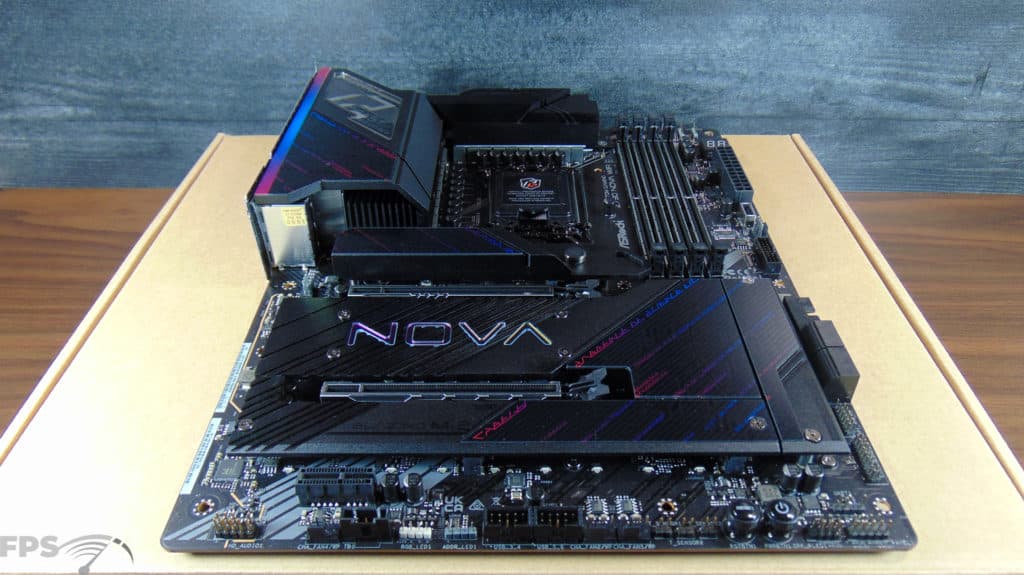
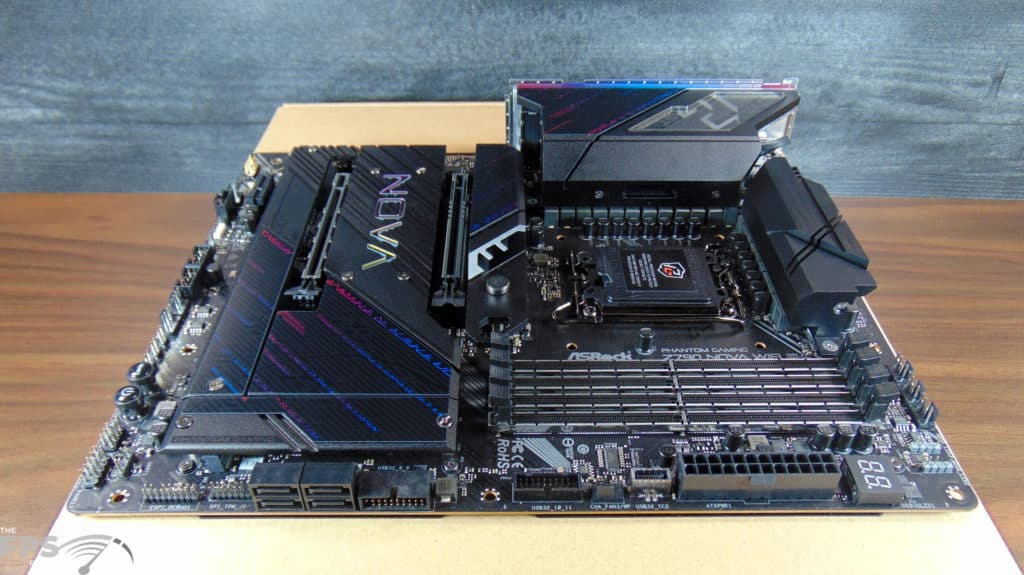


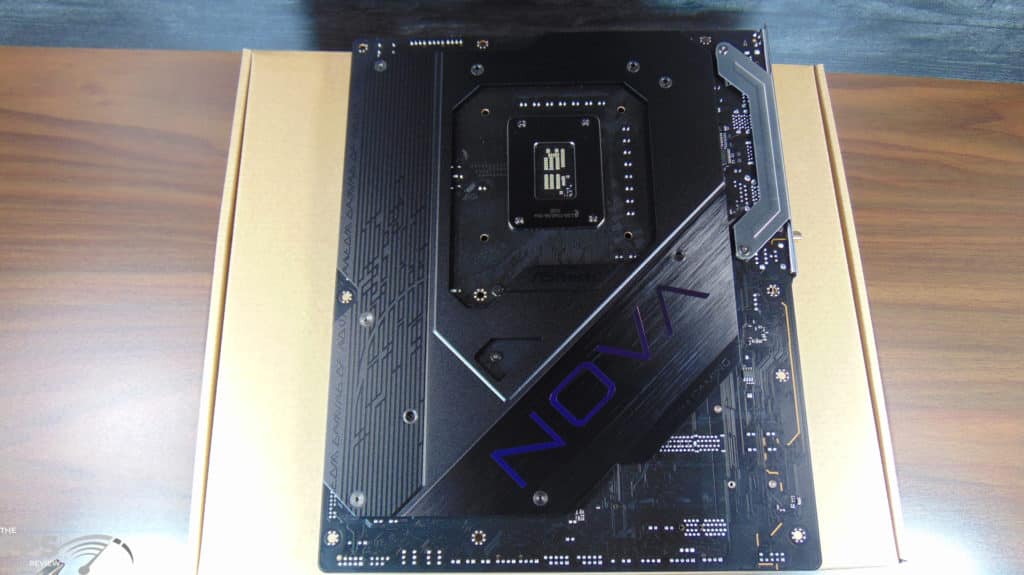
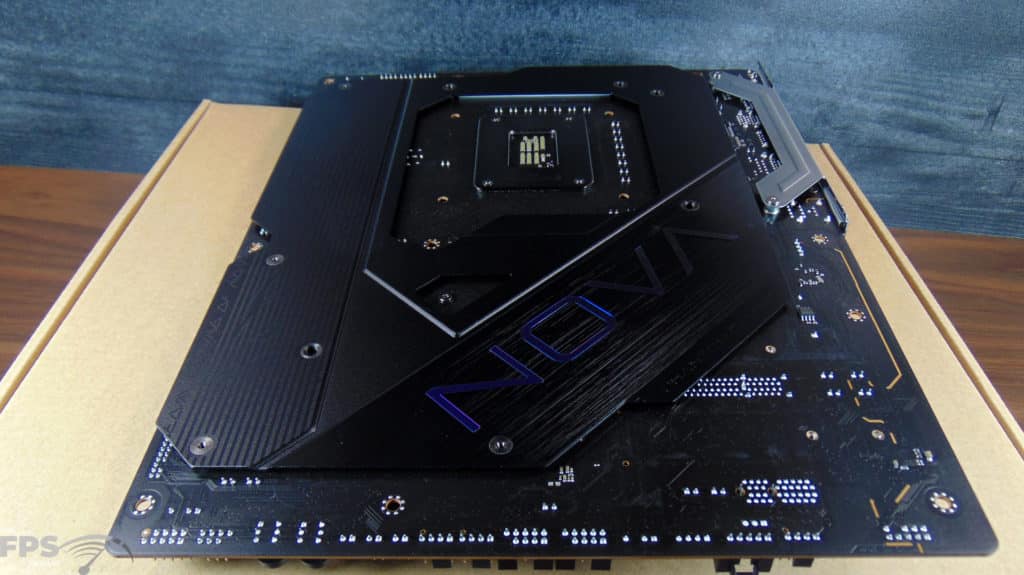
In fact, it has two M.2 sockets which derive their PCIe lanes from the CPU, the Blazing M.2 socket and the M.2 socket right under the PCIe Gen5 x16 slot for the GPU, which is reinforced. Beware, however, if you install any SSD into the top-most Blazing M.2 socket (no matter the Gen) it will force your GPU slot to run in x8 mode, no matter what. Therefore, to get x16 GPU performance you will need to utilize the M.2 socket right underneath the PCIe x16 slot, and that one will operate at PCIe Gen4 x4 SSD speeds just fine in combination with the x16 GPU slot.

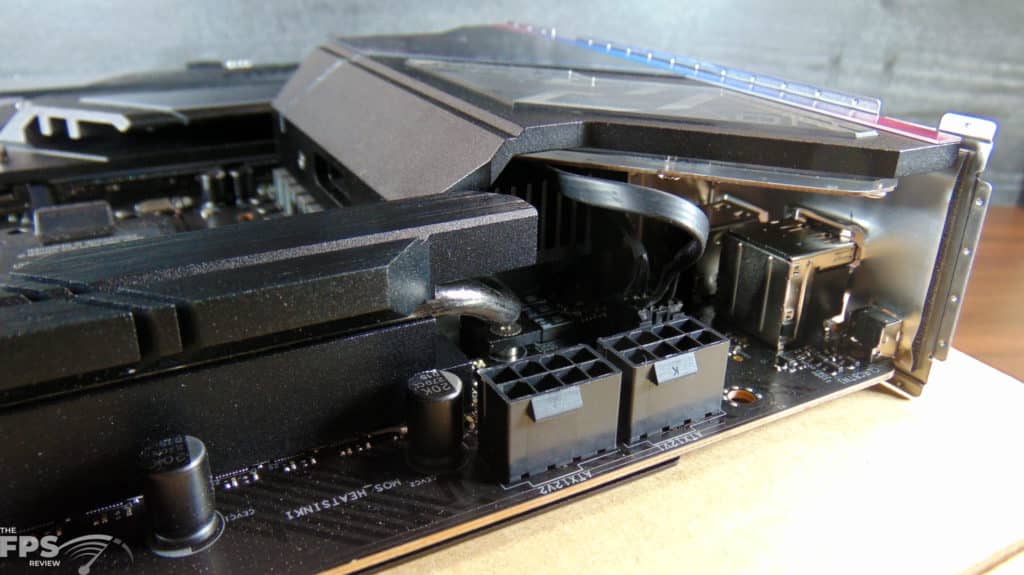
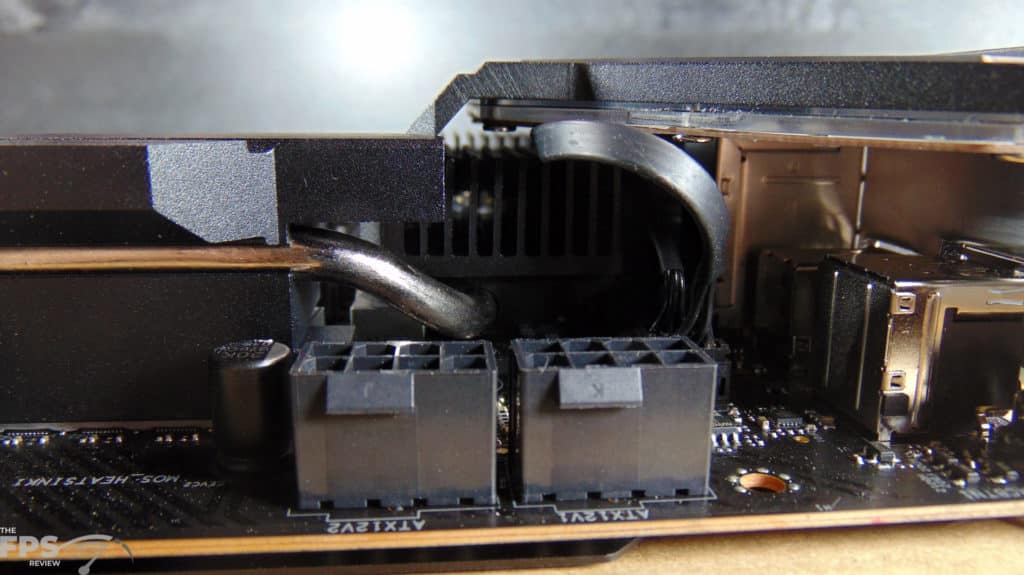
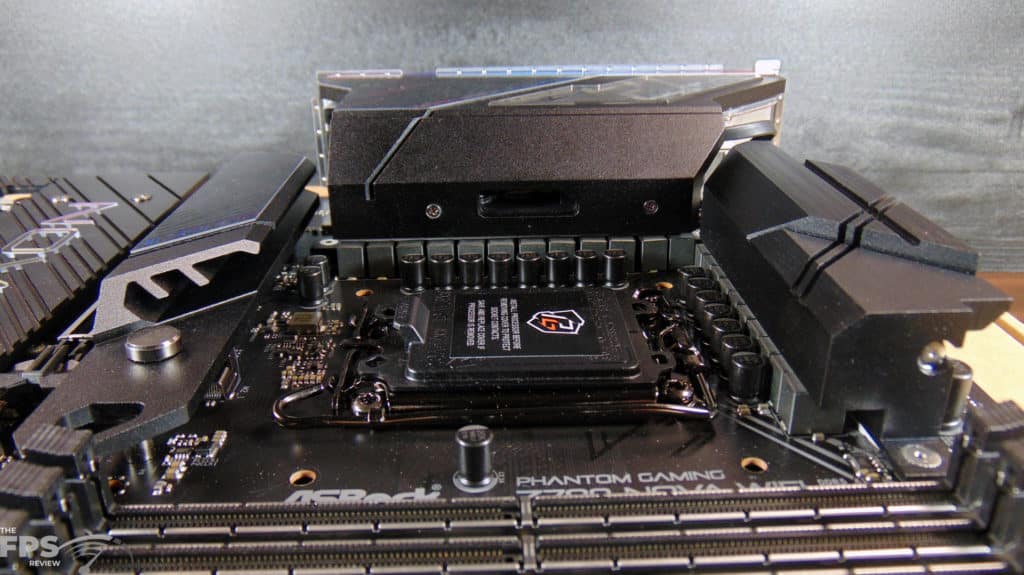

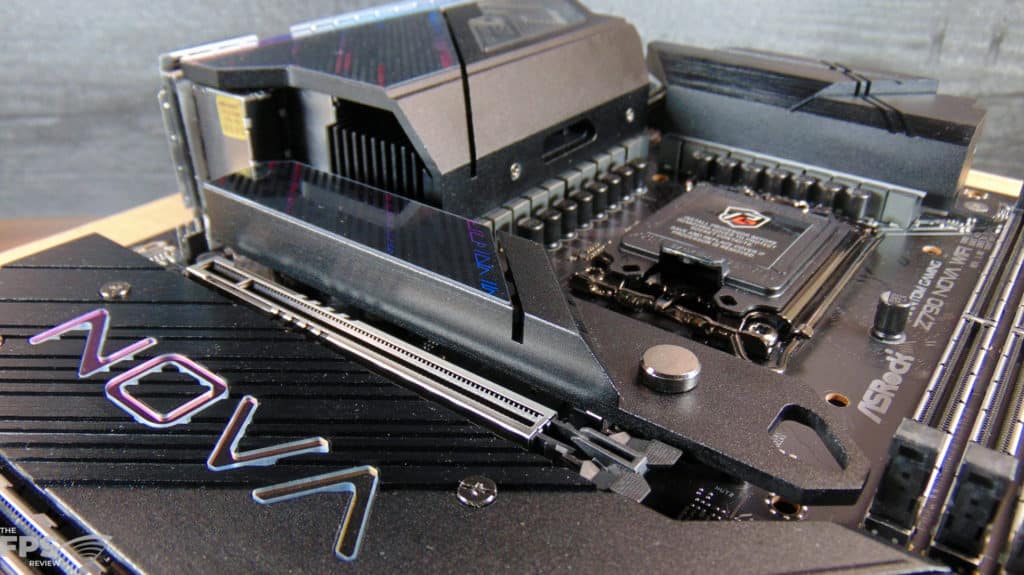
In terms of connectivity, it has the Intel Killer 2.5G LAN on board as well as WiFi 7 802.11be and Bluetooth. It has an HDMI and DisplayPort on board. In terms of USB, it has 2 USB 2.0 ports, 3 USB 3.2 Gen2 ports, a USB 3.2 Gen2x2 Type-C port, Lightning Gaming Ports, and Ultra USB Power ports. It also has front USB 3.2 Gen1 Type-C, and 4 SATA3 ports. It also has RGB with 2 addressable LED headers up top and 1 addressable LED header at the bottom as well as a 1 RGB LED header. It supports ASRock Polychrome RGB. Audio is handled by a Realtek ALC4082 7.1 channel HD audio chip. The I/O shield is integrated.
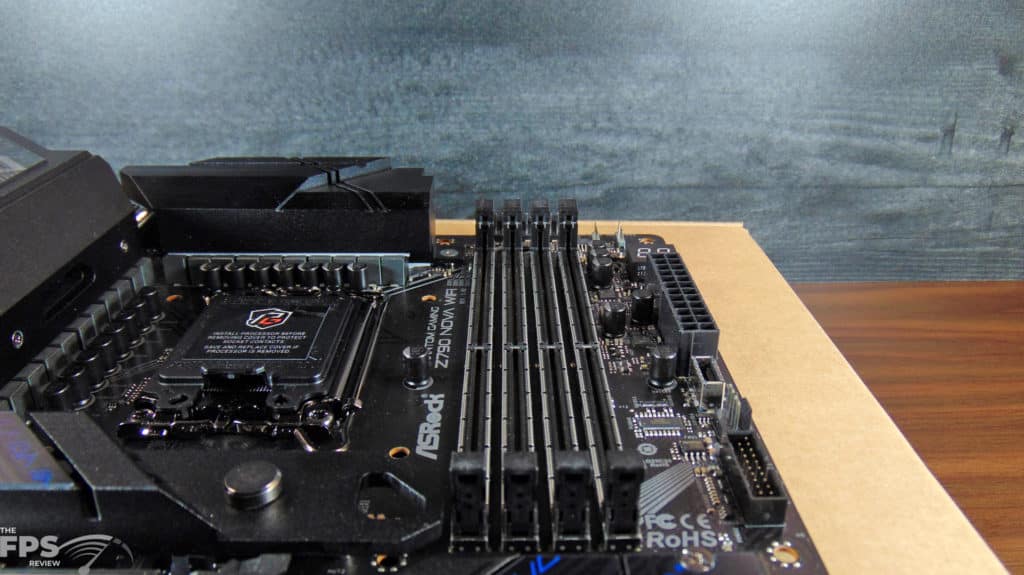
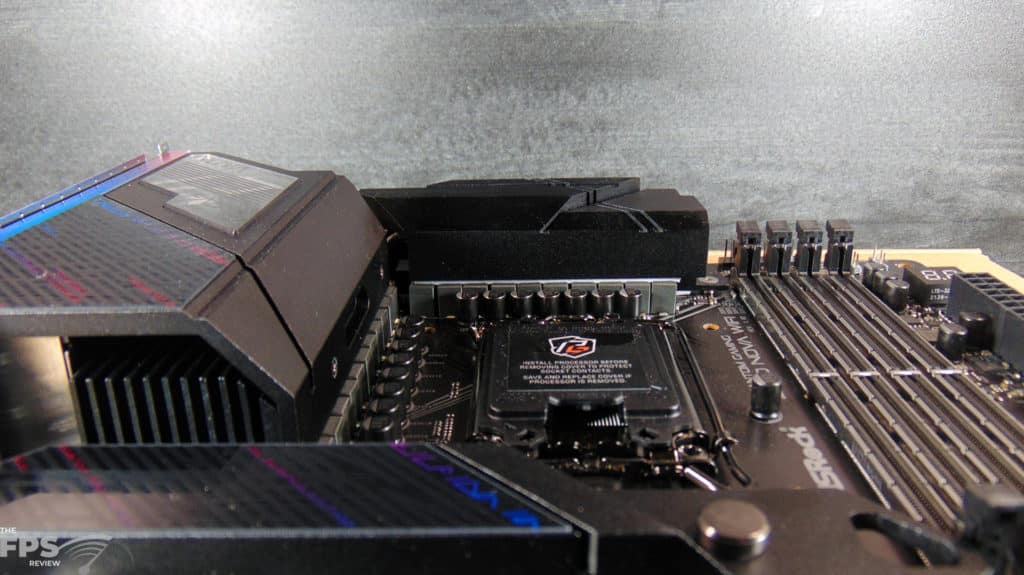
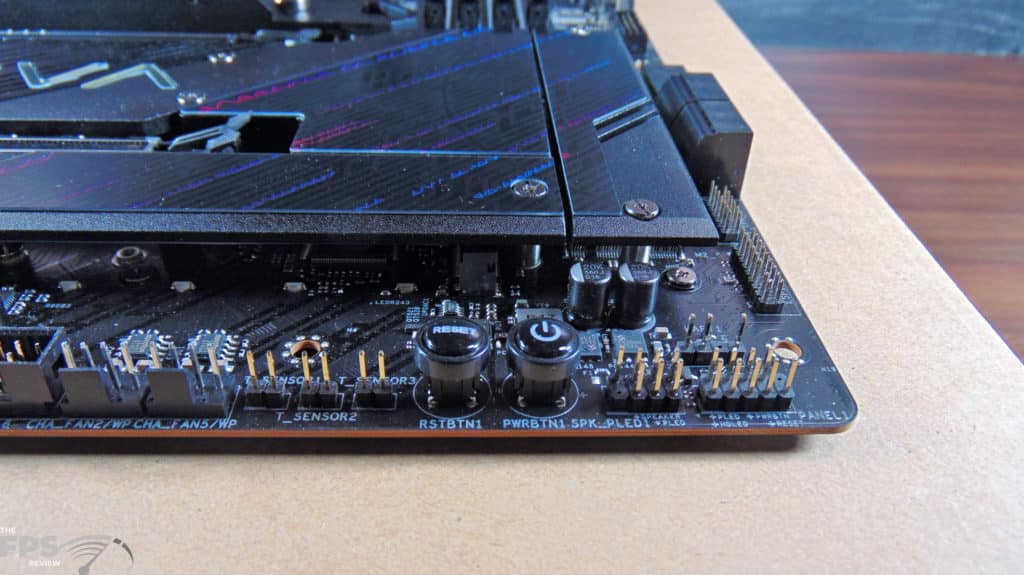


Cooling is where the ASRock Phantom Gaming Z790 NOVA WIFI excels. Firstly, it has two XXL VRM heatsinks with a heatpipe to transfer heat. This is not where it stops, the ASRock Phantom Gaming Z790 NOVA WIFI has an active VRM heatsink fan located underneath the I/O shield cover. This active fan cools the heatsink and is configurable in the BIOS for fan profiles and noise levels.

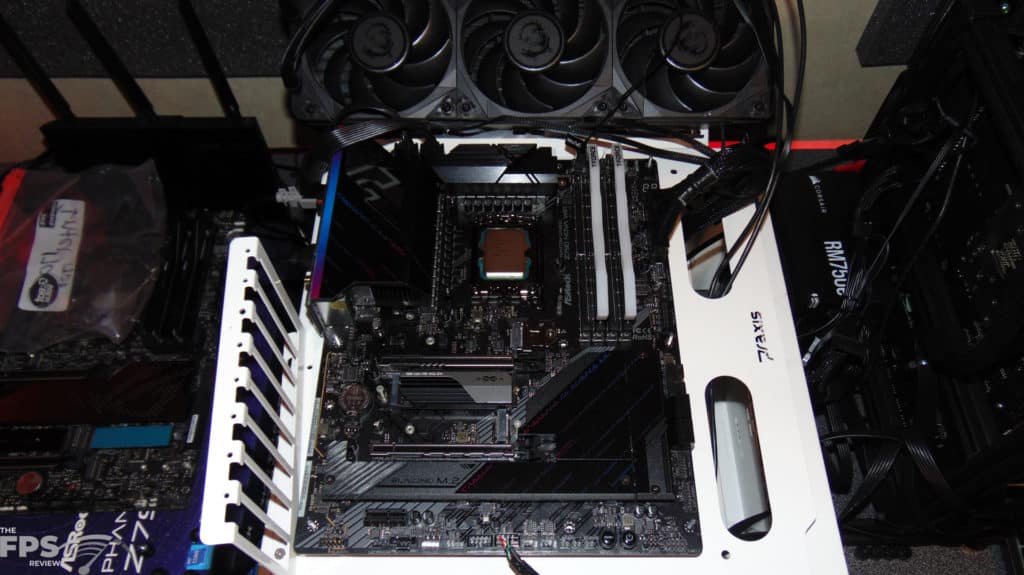
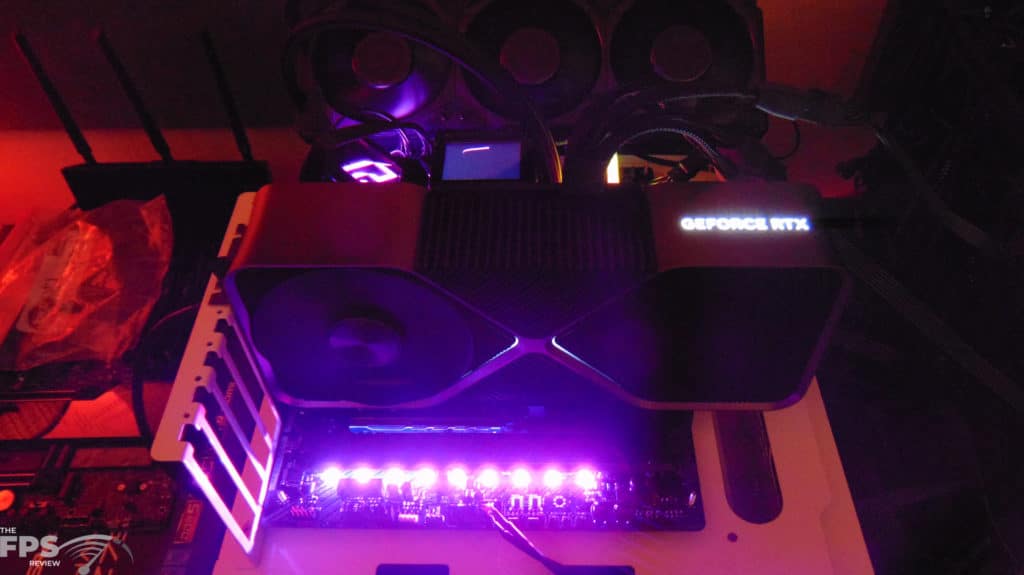
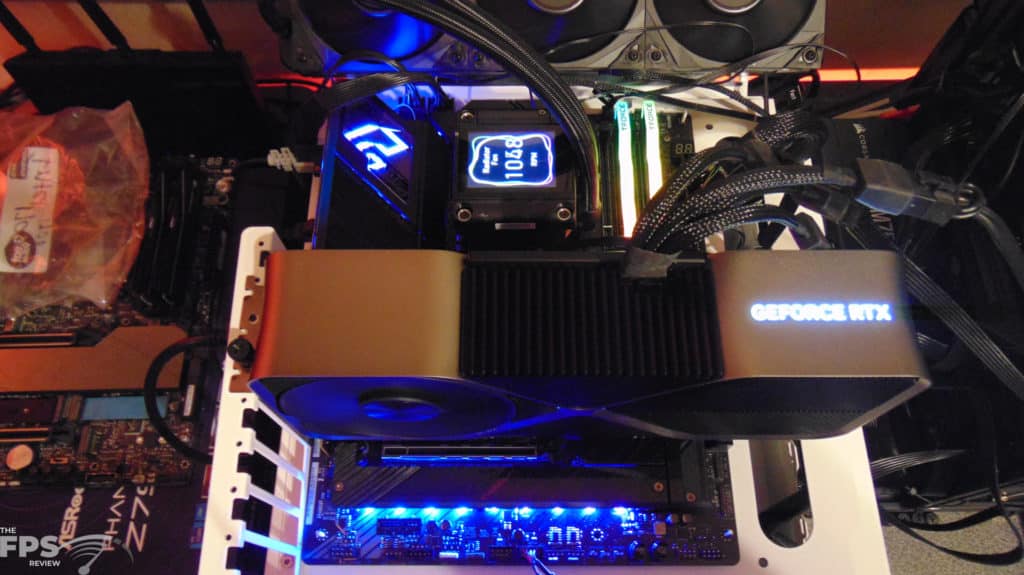
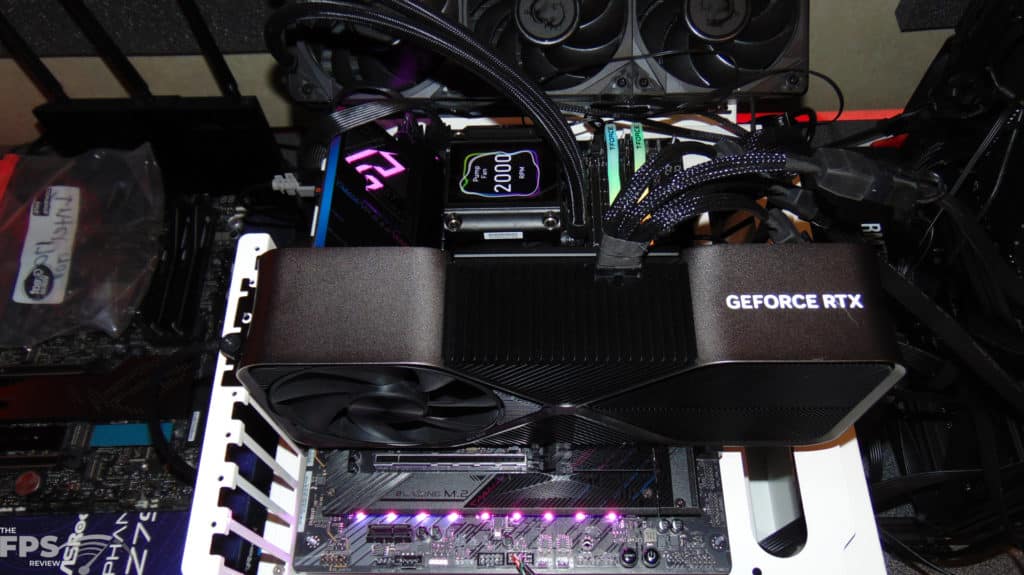
The motherboard also has a very large toolless multi-layer M.2 heatsink on the Blazing M.2 socket. You do not need any tools to remove it and put it back in, and it has a high thickness to it for fast Gen5 SSDs. The bottom M.2 heatsinks are also very large in surface area and combine with the chipset heatsink. It has a CPU fan connector, a CPU/Water pump fan connector, and 2 chassis/water pump fan connectors up top, one on the side, and two more on the bottom all with smart fan speed control. There are also 3 thermistor cable headers.
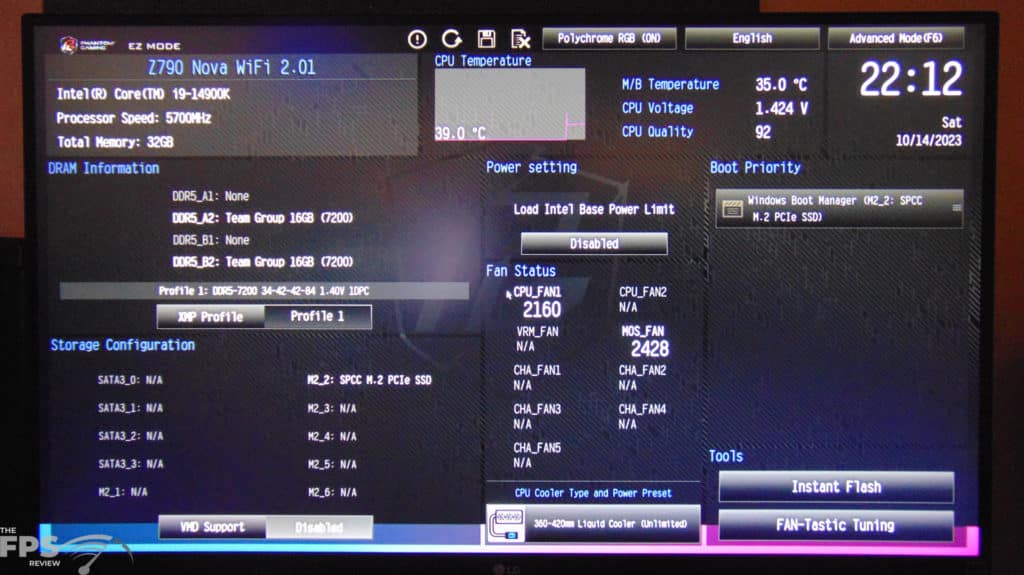
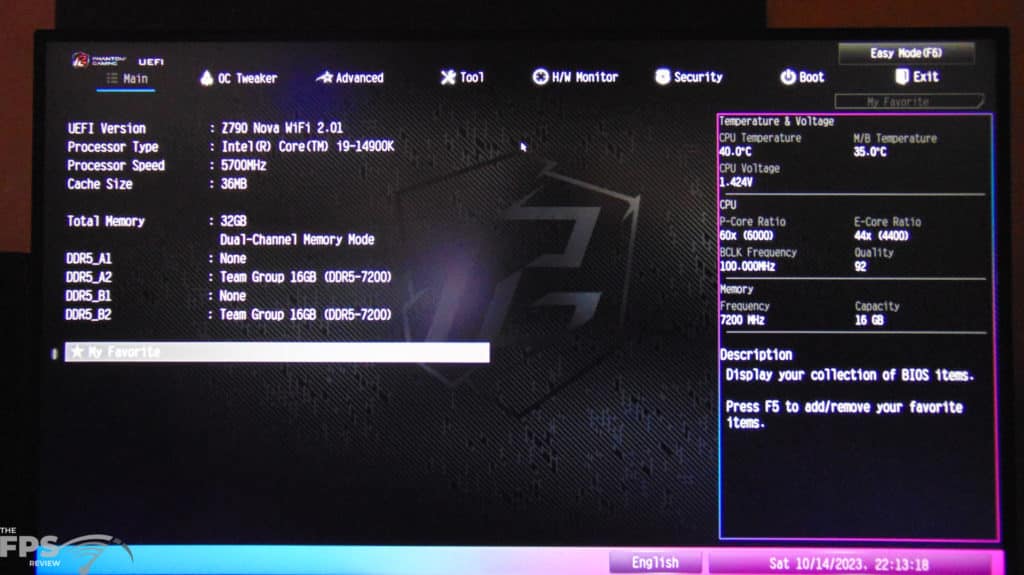

Our ASRock Phantom Gaming Z790 NOVA WIFI Motherboard was running BIOS 2.01, and at the time of writing this was the latest BIOS. The motherboard detected our Intel Core i9-14900K just fine and shows the Processor Speed at 5700MHz with CPU Voltage at 1.424V. We used two different sets of memory kits in this review, with the Teamgroup T-Force Delta DDR5 32GB 7200MT/s CL34 kit installed above, you can see that the motherboard detected it just fine. We were then able to apply the XMP 1 profile, which set the memory at 7200MT/s on this motherboard, and it worked without issue.
We also had the CPU Cooler Type and Power Preset set to 360-420mm Liquid Cooling (which it autodetected for us) which unlocks the Power Profile of the CPU to maximum power utilization, therefore our testing was done at this level, with no caps on the power, this means PL1 and PL2 were set at 4,095W. These were the default motherboard settings, we did not change the power settings, so everything here is how it is at default. We left all fan settings on BIOS defaults.

